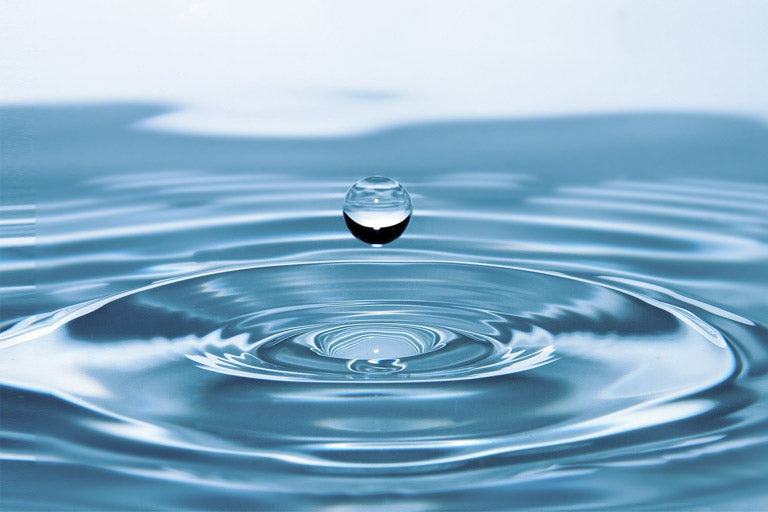Brewing At Home - Water Part 2 of 2
By Tyler Workman

Part 2 of 2
In part two of our Brewing At Home series on water, we will cover the following topics:
Part 2
- What ratio of coffee to water should I use?
- Water temperature
- Limescale & Descaling
If you missed part 1, you can read Brewing At Home - Water Part 1
4. What ratio of coffee to water should I use?
This is perhaps one of the most asked questions we receive regarding coffee. Because coffee is so subjective, the correct answer is always “it’s whatever you like best” however there are protocols, best practices and standards set by the Specialty Coffee Association (SCA), as well as some guidelines which serve as a great starting point.
Keep in mind that the ratio of coffee to water can vary depending on a number of factors including:
- Brew method
- Type of coffee and roast level you are using
- Taste preferences
The ratios we cover below pertain to filter or brewed coffee made in a manual coffee maker or drip coffee machine. Espresso is a different method of brewing altogether which uses high pressure to brew coffee, so espresso requires its own set of ratios which we will cover in a future blog article.
When we discuss coffee to water ratios we use three starting points which you can adjust to taste:
- SCA Golden Cup Standard - The ratio used for the SCA Golden Cup standard* is 55g (grams) of Coffee to 1L (Liter which equals 1,000 milliliters). This translates to approximately a 1:18 ratio (1part coffee to 18 parts water measured in grams or milliliters). *Keep in mind that 1 gram = 1 milliliter
- Ratio Range - In the coffee industry there is a commonly recommended range of ratios from 1:15 to 1:18. *Since brewed coffee is 98-99% water, the larger number in ratios written in this way is always the water and the smaller number is coffee.
- Tablespoons (or scoops) to water - For those who do not have a scale to weigh coffee and water, there is also a guideline of 1-2 Tablespoons of ground coffee for every 6 oz of water. *If using a coffee scoop, for example one that came with a grinder or coffee maker, measure to see how much volume that scoop holds. Most scoops will be between one tablespoon or two tablespoons

Tips:
- When measuring coffee, we strongly recommend using a scale to get the most consistent coffee possible. Coffees can differ in density, and the grind size of your coffee can affect the volume of coffee (if you are measuring with tablespoons or scoops), but weight is always a consistent measure. We will have an upcoming article about scales.
- Check the directions/instructions for your particular coffee maker, as they usually have their own recommended ratios.
How much liquid is in 1 cup of coffee?
As simple as the question is, the answer can be a little confusing. This is because some countries measure a cup of coffee to one standard, and other countries measure to another standard. The two most common measurements for a “cup of coffee” are:
- 4 oz (ounces) or 118 ml (milliliters or 118 grams)
- 6 oz (ounces) or 177 ml (milliliters or 177 grams)
This measurement is also usually the amount of water used before brewing as some water will be trapped in the coffee grinds. This is why there can be a noticeable difference in the amount of liquid used, and yielded, from one coffee maker to another.
5. Water Temperature
What temperature water should I use?
This question is usually reserved for manual coffee brewing methods such as French Press, Pour Over, etc. as you cannot typically change the water temperature on an automatic drip coffee machine. Water temperature can have quite an effect on how well your coffee is extracted (coffee extraction refers to the process of extracting desirable compounds from coffee grinds during the brewing of coffee) which can greatly affect the overall taste of your brewed coffee.
The Specialty Coffee Association (SCA) has set a standard of 200°F ±5° (93.0°C ±3°). As a temperature range, this can be stated as 195 - 205 degrees Fahrenheit at the time of contact with coffee. *Source: https://sca.coffee/research/protocols-best-practices
The SCA also has a certification program for home brewers which are tested to have water temperatures between 195 - 205 degrees Fahrenheit at the time of contact with coffee. See SCA Certified Home Brewers: https://sca.coffee/certified-home-brewer
Temperature and Extraction
Water temperature influences the level of extraction* (the process of extracting desirable compounds from coffee grinds during the brewing of coffee) of a coffee along with other influencing factors including roast level of the coffee, grind size, brewing/steep time, and pressure. *We will have an article on coffee extraction discussing brew strength, total dissolved solids, and extraction yield in the future.
During the roasting process, heat is applied to coffee beans which allows certain flavors and characteristics to develop. The level of roasting (light, medium, roast) can influence the type of flavors (floral, fruity, smoky, chocolaty) and characteristics (such as body or mouthfeel) in your overall brewed cup of coffee. Additionally, the darker a coffee is roasted, the more soluble and easily extracted the coffee becomes. This means that you can extract a darker roasted coffee to a satisfactory level with a lower temperature water than a light roast. For a lighter roasted coffee, the best practice recommendation is to use a higher temperature water at the higher side of the SCA range. As with most topics in coffee, there are exceptions to best practices, recommendations, etc. This is true with the recommended temperature for brewing in the Aeropress which is 185 degrees. There are also some in the coffee industry who recommend using boiling water to brew some light and medium roasted coffees.
Retaining Heat
Another topic we get questions about is how to retain heat for your hot coffee. Our recommendation involves some best practices:
- Preheating & Pre-Rinsing For Brewing - To maintain a consistent coffee brewing temperature, you will want to preheat and pre-rinse your coffee maker (manual or machine) as well as pre-rinsing the filter you will be using. You can do this by inserting your filter into the coffee maker then running a short brew cycle about (2 cups if using an automatic machine) or by pouring hot water from a kettle into your preferred coffee maker (Pour Over, Aeropress, French Press, etc.). This will preheat your coffee maker, and it will also rinse away any paper taste from your filter which can affect the taste of your brewed coffee.
- Preheating for storage or drinking vessel - To maintain a consistent temperature once the coffee is brewed, we also recommend preheating your coffee pot/decanter/carafe, and your coffee mug or drinking vessel. Preheating your coffee pot/decanter/carafe and coffee mug/drinking vessel can be part of your preheating and pre-rinsing of the coffee maker as you can let the hot water from the coffee maker drip into your coffee pot or mug (if brewing straight into a mug). If you will be brewing into a coffee pot then pouring into a mug, you will want to preheat the mug separately. Keep the hot water in the coffee pot as long as you can, then dump the hot water right before you begin brewing. Keep the hot water in the mug as long as you can, then dump the hot water right before you begin to pour your coffee into the mug.
- Insulation for drinking temperature - For those who want to maintain their brewed coffee’s temperature for as long as possible, we recommend insulated coffee pot/decanter/carafes, insulated cozy, and insulated coffee mug or drinking vessel. Insulated coffee pots/decanters/carafes can be found for automatic drip machines as well as manual coffee makers. Some examples include:
Technivorm Moccamaster, Bonavita, Breville Precision Brewer - These SCA certified home brewers have an option for a thermal insulated coffee pot:

Hario V60 Vacuum insulated metal server

Chemex Cozy

When looking for insulated containers or mugs you will want to look for the following terms: insulated, thermal, double wall, vacuum insulated, etc. Some of the brands we recommend are: Brumate, Fellow Carter, HydroFlask, Yeti, and Contigo.

The recommendations above are our own recommendations based on our own knowledge, experience, industry best practices, and standards. We do not claim to be the final authority on all things coffee, so we encourage people to experiment to see what works best for them. If you enjoyed this article or have any questions feel free to drop us a message on our social media accounts, send us an email, or drop a comment below. Happy Sipping ☕!


0 comments